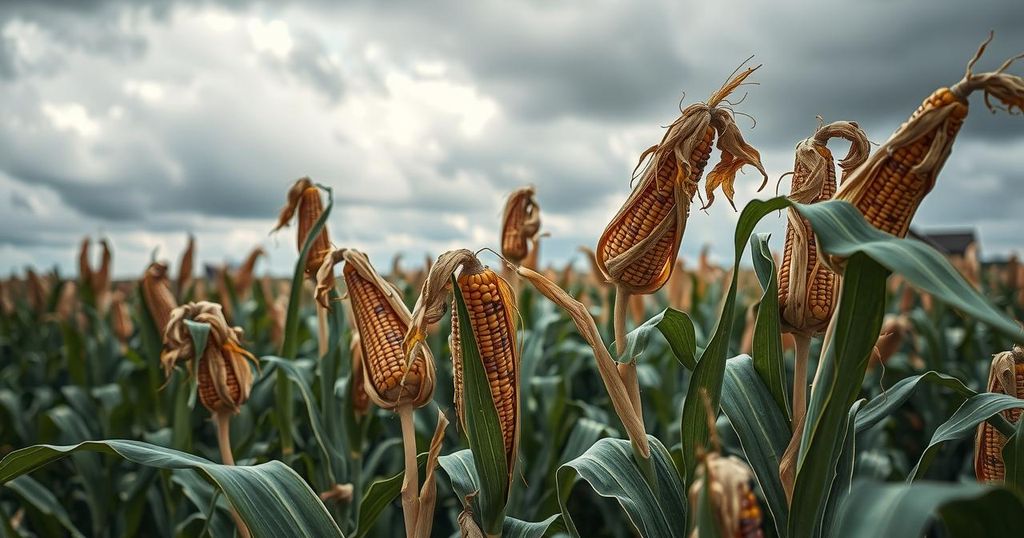The USDA has cut its forecasts for corn and soybean production in Argentina and Brazil due to adverse weather conditions, while also lowering Chinese grain import predictions for 2024-25. Despite these changes, U.S. agricultural production estimates for corn and soybeans remain stable, indicating steady domestic supply amidst global market shifts.
The U.S. Department of Agriculture (USDA) has revised downward its forecasts for corn and soybean production in Argentina and Brazil, attributing this adjustment to adverse weather conditions affecting newly planted crops. In its recent World Agricultural Supply and Demand Estimates report, the USDA announced that Argentina’s corn yield is now estimated at 50 million metric tons for 2025, a decrease of 1 million. Additionally, the soybean output is projected to fall to 49 million tons, down by 3 million. Meanwhile, Brazil’s corn production forecast also dropped by 1 million tons to 126 million tons, although soybean projections remained stable at 169 million tons. The combination of excessive rainfall in certain regions and droughts in others has severely impacted the health and yield of these crops.
While the USDA’s projections for South American production may affect U.S. grain prices only slightly, analysts have noted a stable outlook for U.S. crops. Corn production estimates remain unchanged at 14.87 billion bushels, while soybean projections hold steady at 4.37 billion bushels. This assessment indicates that despite the weather-related challenges in South America, U.S. agricultural outputs are anticipated to meet current expectations.
In another notable development, the USDA significantly reduced its predictions for Chinese grain imports in the 2024-25 period. Specifically, it lowered estimates for corn and wheat imports to 10 million and 8 million metric tons, respectively, which represents a significant decrease from earlier assessments. This decline reflects China’s reduced engagement in global grain markets and the record-large harvests of corn and wheat anticipated within the nation. Although China’s grain stock levels will be historically substantial, analysts caution that the country’s slower economic growth could adversely affect its future agricultural purchases.
In summary, the USDA’s latest reports revealed a decline in corn and soybean production forecasts for Argentina and Brazil due to adverse weather conditions. Additionally, the agency adjusted expectations for Chinese grain imports downwards as domestic production rises. Despite these changes, U.S. crop production estimates remain stable. These developments will impact global market dynamics, especially concerning South America’s competitive position against U.S. agricultural exports.
Original Source: farmpolicynews.illinois.edu




